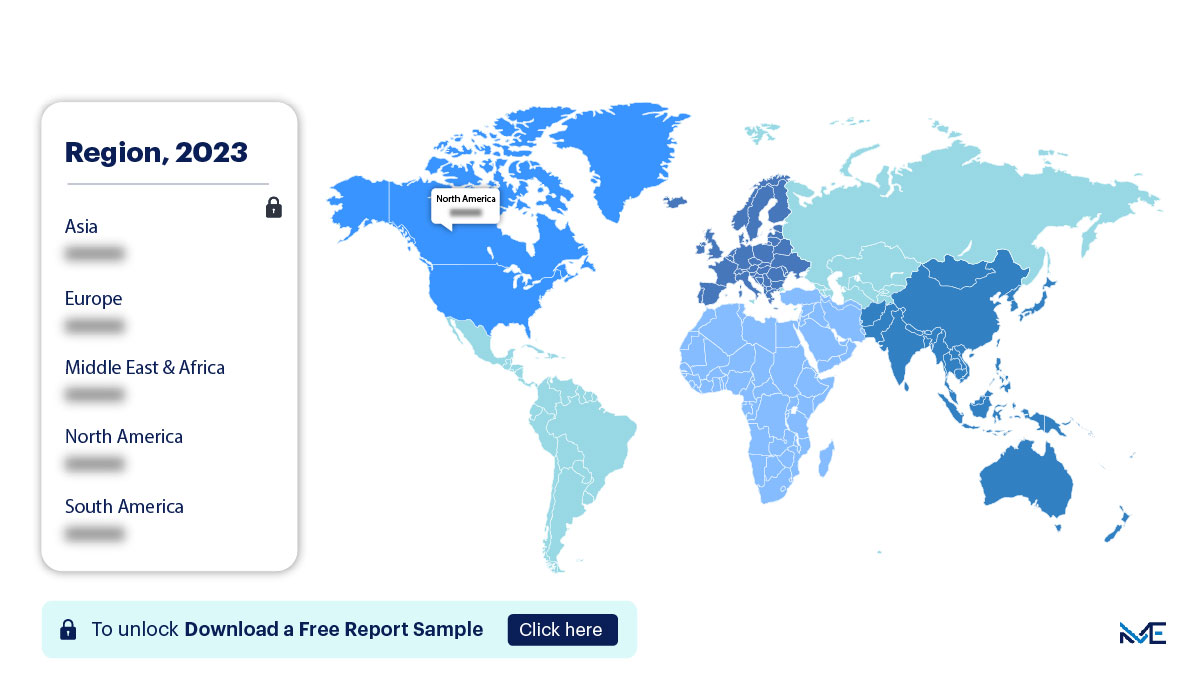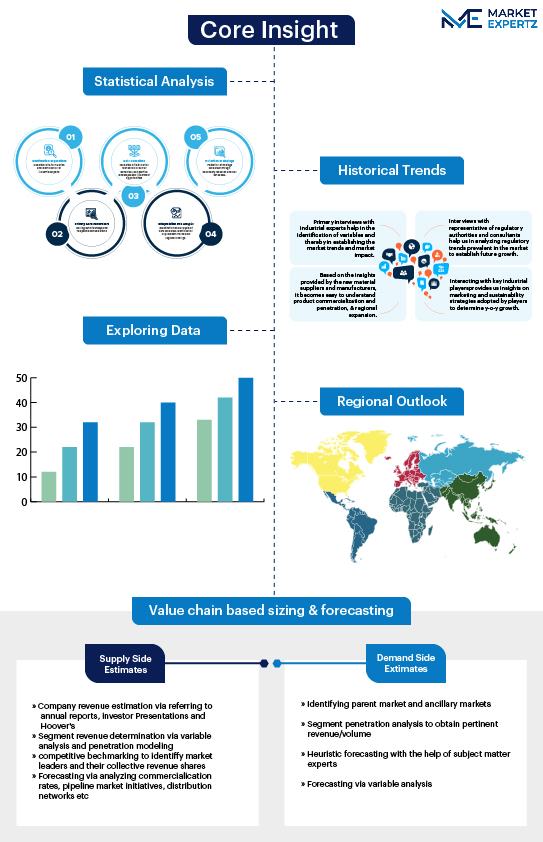Market Snapshot
| Study Period | 2019-2032 |
| Base Year | 2023 |
| Forcast Year | 2023-2032 |
| CAGR | 9.28 |


Gain accurate insights regarding the negative impacts of COVID-19 on all markets and industries
Download Sample PdfReport Overview
Automotive Engine Management System Market Analysis Report 2023-2032
The Automotive Engine Management System Market is poised to experience a Compound Annual Growth Rate (CAGR) of 7.62% between 2022 and 2032. Over this period, the market size is expected to witness a substantial increase, reaching a valuation of USD 47.5 billion. The growth of this market is driven by a combination of factors, including the increasing demand for fuel-efficient and low-emission vehicles, advancements in automotive technology, and the need for improved engine performance and reliability. The market primarily focuses on the development and adoption of engine management systems in the automotive industry.
Automotive Engine Management System Market Overview
Drivers
One of the key drivers behind the expansion of the Automotive Engine Management System Market is the growing demand for fuel-efficient and environmentally friendly vehicles. Stringent emissions regulations and the need to reduce carbon footprints have compelled automakers to invest in engine management systems that optimize fuel combustion, reduce emissions, and improve overall engine efficiency.
Additionally, advancements in automotive technology, including the integration of electronic control units (ECUs) and sensors, are driving the adoption of engine management systems. These systems enable real-time monitoring and control of engine parameters, enhancing engine performance, reliability, and durability.
Trends
An important trend shaping the Automotive Engine Management System Market is the integration of engine management with vehicle connectivity and telematics systems. Modern vehicles are becoming increasingly connected, and engine management systems are evolving to communicate with other vehicle systems and external data sources. This connectivity enables features such as remote diagnostics, over-the-air updates, and predictive maintenance.
Furthermore, the demand for electric and hybrid vehicles is driving innovation in engine management systems. These systems play a critical role in managing electric powertrains, battery performance, and regenerative braking, contributing to the efficient operation of electric and hybrid vehicles.
Restraints
One of the challenges faced by the Automotive Engine Management System Market is the complexity and cost associated with advanced engine management technologies. Developing and implementing sophisticated engine management systems require significant investments in research, development, and manufacturing. Smaller automakers and price-sensitive market segments may find it challenging to adopt these systems.
Additionally, concerns about cybersecurity and data privacy are emerging as potential restraints. As engine management systems become more connected, they may become vulnerable to cybersecurity threats, necessitating robust security measures and protocols.
Automotive Engine Management System Market Segmentation By Component
The market is segmented based on the components used in engine management systems. Common components include ECUs, sensors, actuators, and software. Each component plays a vital role in monitoring and controlling engine functions.
Automotive Engine Management System Market Segmentation By Vehicle Type
Passenger vehicles, including sedans, SUVs, and hatchbacks, are expected to be a prominent growth area within the Automotive Engine Management System Market. Consumers are increasingly demanding vehicles with better fuel efficiency, lower emissions, and advanced engine performance, driving the adoption of engine management systems.
Commercial vehicles, including trucks and buses, also represent an important application segment. Fleet operators seek to reduce operating costs and emissions, making engine management systems a valuable investment.
Download the report summary now!
Request pdf SampleNorth America, Europe, and Asia-Pacific (APAC) are anticipated to be significant drivers of global Automotive Engine Management System Market growth. These regions have stringent emissions regulations and a strong focus on vehicle performance and efficiency. Automakers in these regions are investing in advanced engine management technologies to meet these requirements.
The market may face short-term disruptions due to supply chain challenges and semiconductor shortages in the wake of the COVID-19 pandemic. However, the long-term trend towards cleaner, more efficient vehicles is expected to drive continued demand for engine management systems.
Automotive Engine Management System Market Customer Landscape
The Automotive Engine Management System Market report offers insights into the adoption patterns of the market, ranging from early adopters to laggards. The report examines adoption rates across different regions based on penetration levels. Moreover, the report delves into key criteria influencing purchase decisions and factors affecting price sensitivity. These insights assist companies in formulating effective strategies for market entry and growth.
Major Automotive Engine Management System Market Companies
Prominent players in the Automotive Engine Management System Market are implementing diverse strategies to strengthen their market presence. These strategies include research and development efforts to improve engine management technologies, collaborations with automakers, geographic expansion, and the introduction of innovative engine management solutions.
Sample list of major companies in the market:
- Bosch
- Continental AG
- Delphi Technologies (Aptiv)
- Denso Corporation
- Magneti Marelli (Calsonic Kansei)
Qualitative and quantitative analyses of these companies offer valuable insights into the competitive landscape. This analysis enables stakeholders to comprehend market dynamics and assess the strengths and weaknesses of key players. The categorization of companies based on their market focus and influence provides a comprehensive view of the competitive environment.
Segment Overview
The Automotive Engine Management System Market report provides revenue forecasts on a global, regional, and country level. The report also includes an analysis of emerging trends and growth opportunities spanning from 2019 to 2032.
- Component Type Outlook (USD Billion, 2019 - 2032)
- Electronic Control Units (ECUs)
- Sensors
- Actuators
- Software
- Vehicle Type Outlook (USD Billion, 2019 - 2032)
- Passenger Vehicles
- Commercial Vehicles
- Geography Outlook (USD Billion, 2019 - 2032)
- North America
- United States
- Canada
- Europe
- United Kingdom
- Germany
- France
- Rest of Europe
- APAC
- China
- Japan
- India
- Rest of APAC
- Latin America
- Brazil
- Mexico
- Rest of Latin America
- Middle East & Africa
- United Arab Emirates
- South Africa
- Rest of Middle East & Africa
TABLE OF CONTENTS: GLOBAL Automotive Engine Management System MARKET
Chapter 1. MARKET SYNOPSIS
1.1. Market Definition
1.2. Research Scope & Premise
1.3. Methodology
1.4. Market Estimation Technique
Chapter 2. EXECUTIVE SUMMARY
2.1. Summary Snapshot, 2016 – 2027
Chapter 3. INDICATIVE METRICS
3.1. Macro Indicators
Chapter 4. Automotive Engine Management System MARKET SEGMENTATION & IMPACT ANALYSIS
4.1. Automotive Engine Management System Segmentation Analysis
4.2. Industrial Outlook
4.3. Price Trend Analysis
4.4. Regulatory Framework
4.5. Porter’s Five Forces Analysis
4.5.1. Power Of Suppliers
4.5.2. Power Of Buyers
4.5.3. Threat Of Substitutes
4.5.4. Threat Of New Entrants
4.5.5. Competitive Rivalry
Chapter 5. Automotive Engine Management System MARKET BY vehicle type SIGHTS & TRENDS
5.1. Segment 1 Dynamics & Market Share, 2019 & 2027
5.2 Passenger Car
5.2.1. Market Estimates And Forecast, 2016 – 2027 (USD Million)
5.2.2. Market Estimates And Forecast, By Region, 2016 – 2027 (USD Million)
5.3 LCV, & HCV
5.3.1. Market Estimates And Forecast, 2016 – 2027 (USD Million)
5.3.2. Market Estimates And Forecast, By Region, 2016 – 2027 (USD Million)
Chapter 6. Automotive Engine Management System MARKET BY Engine type INSIGHTS & TRENDS
6.1. Segment 2 Dynamics & Market Share, 2019 & 2027
6.2 Gasoline
6.2.1. Market Estimates And Forecast, 2016 – 2027 (USD Million)
6.2.2. Market Estimates And Forecast, By Region, 2016 – 2027 (USD Million)
6.3 Diesel
6.3.1. Market Estimates And Forecast, 2016 – 2027 (USD Million)
6.3.2. Market Estimates And Forecast, By Region, 2016 – 2027 (USD Million)
Chapter 7. Automotive Engine Management System MARKET REGIONAL OUTLOOK
7.1. Automotive Engine Management System Market Share By Region, 2019 & 2027
7.2. NORTH AMERICA
7.2.1. North America Automotive Engine Management System Market Estimates And Forecast, 2016 – 2027, (USD Million)
7.2.2. North America Automotive Engine Management System Market Estimates And Forecast By Segment 1, 2016 –2027, (USD Million)
7.2.3. North America Automotive Engine Management System Market Estimates And Forecast By Segment 2, 2016 –2027, (USD Million)
7.2.4. North America Automotive Engine Management System Market Estimates And Forecast By Segment 3, 2016 –2027, (USD Million)
7.2.5. U.S.
7.2.5.1. U.S. Automotive Engine Management System Market Estimates And Forecast, 2016 – 2027, (USD Million)
7.2.5.2. U.S. Automotive Engine Management System Market Estimates And Forecast By Segment 1, 2016 –2027, (USD Million)
7.2.5.3. U.S. Automotive Engine Management System Market Estimates And Forecast By Segment 2, 2016 –2027, (USD Million)
7.2.5.4. U.S. Automotive Engine Management System Market Estimates And Forecast By Segment 3, 2016 –2027, (USD Million)
7.2.6. CANADA
7.2.6.1. Canada Automotive Engine Management System Market Estimates And Forecast, 2016 – 2027, (USD Million)
7.2.6.2. Canada Automotive Engine Management System Market Estimates And Forecast By Segment 1, 2016 –2027, (USD Million)
7.2.6.3. Canada Automotive Engine Management System Market Estimates And Forecast By Segment 2, 2016 –2027, (USD Million)
7.2.6.4. Canada Automotive Engine Management System Market Estimates And Forecast By Segment 3, 2016 –2027, (USD Million)
7.3. EUROPE
7.3.1. Europe Automotive Engine Management System Market Estimates And Forecast, 2016 – 2027, (USD Million)
7.3.2. Europe Automotive Engine Management System Market Estimates And Forecast By Segment 1, 2016 –2027, (USD Million)
7.3.3. Europe Automotive Engine Management System Market Estimates And Forecast By Segment 2, 2016 –2027, (USD Million)
7.3.4. Europe Automotive Engine Management System Market Estimates And Forecast By Segment 3, 2016 –2027, (USD Million)
7.3.5. GERMANY
7.3.5.1. Germany Automotive Engine Management System Market Estimates And Forecast, 2016 – 2027, (USD Million)
7.3.5.2. Germany Automotive Engine Management System Market Estimates And Forecast By Segment 1, 2016 –2027, (USD Million)
7.3.5.3. Germany Automotive Engine Management System Market Estimates And Forecast By Segment 2, 2016 –2027, (USD Million)
7.3.5.4. Germany Automotive Engine Management System Market Estimates And Forecast By Segment 3, 2016 –2027, (USD Million)
7.3.6. FRANCE
7.3.6.1. France Automotive Engine Management System Market Estimates And Forecast, 2016 – 2027, (USD Million)
7.3.6.2. France Automotive Engine Management System Market Estimates And Forecast By Segment 1, 2016 –2027, (USD Million)
7.3.6.3. France Automotive Engine Management System Market Estimates And Forecast By Segment 2, 2016 –2027, (USD Million)
7.3.6.4. France Automotive Engine Management System Market Estimates And Forecast By Segment 3, 2016 –2027, (USD Million)
7.3.7. U.K.
7.3.7.1. U.K. Automotive Engine Management System Market Estimates And Forecast, 2016 – 2027, (USD Million)
7.3.7.2. U.K. Automotive Engine Management System Market Estimates And Forecast By Segment 1, 2016 –2027, (USD Million)
7.3.7.3. U.K. Automotive Engine Management System Market Estimates And Forecast By Segment 2, 2016 –2027, (USD Million)
7.3.7.4. U.K. Automotive Engine Management System Market Estimates And Forecast By Segment 3, 2016 –2027, (USD Million)
7.4. ASIA-PACIFIC
7.4.1. Asia Pacific Automotive Engine Management System Market Estimates And Forecast, 2016 – 2027, (USD Million)
7.4.2. Asia Pacific Automotive Engine Management System Market Estimates And Forecast By Segment 1, 2016 –2027, (USD Million)
7.4.3. Asia Pacific Automotive Engine Management System Market Estimates And Forecast By Segment 2, 2016 –2027, (USD Million)
7.4.4. Asia Pacific Automotive Engine Management System Market Estimates And Forecast By Segment 3, 2016 –2027, (USD Million)
7.4.5. CHINA
7.4.5.1. China Automotive Engine Management System Market Estimates And Forecast, 2016 – 2027, (USD Million)
7.4.5.2. China Automotive Engine Management System Market Estimates And Forecast By Segment 1, 2016 –2027, (USD Million)
7.4.5.3. China Automotive Engine Management System Market Estimates And Forecast By Segment 2, 2016 –2027, (USD Million)
7.4.5.4. China Automotive Engine Management System Market Estimates And Forecast By Segment 3, 2016 –2027, (USD Million)
7.4.6. INDIA
7.4.6.1. India Automotive Engine Management System Market Estimates And Forecast, 2016 – 2027, (USD Million)
7.4.6.2. India Automotive Engine Management System Market Estimates And Forecast By Segment 1, 2016 –2027, (USD Million)
7.4.6.3. India Automotive Engine Management System Market Estimates And Forecast By Segment 2, 2016 –2027, (USD Million)
7.4.6.4. India Automotive Engine Management System Market Estimates And Forecast By Segment 3, 2016 –2027, (USD Million)
7.4.7. JAPAN
7.4.7.1. Japan Automotive Engine Management System Market Estimates And Forecast, 2016 – 2027, (USD Million)
7.4.7.2. Japan Automotive Engine Management System Market Estimates And Forecast By Segment 1, 2016 –2027, (USD Million)
7.4.7.3. Japan Automotive Engine Management System Market Estimates And Forecast By Segment 2, 2016 –2027, (USD Million)
7.4.7.4. Japan Automotive Engine Management System Market Estimates And Forecast By Segment 3, 2016 –2027, (USD Million)
7.4.8. AUSTRALIA
7.4.8.1. Australia Automotive Engine Management System Market Estimates And Forecast, 2016 – 2027, (USD Million)
7.4.8.2. Australia Automotive Engine Management System Market Estimates And Forecast By Segment 1, 2016 –2027, (USD Million)
7.4.8.3. Australia Automotive Engine Management System Market Estimates And Forecast By Segment 2, 2016 –2027, (USD Million)
7.4.8.4. Australia Automotive Engine Management System Market Estimates And Forecast By Segment 3, 2016 –2027, (USD Million)
7.5. MIDDLE EAST AND AFRICA (MEA)
7.5.1. Mea Automotive Engine Management System Market Estimates And Forecast, 2016 – 2027, (USD Million)
7.5.2. Mea Automotive Engine Management System Market Estimates And Forecast By Segment 1, 2016 –2027, (USD Million)
7.5.3. Mea Automotive Engine Management System Market Estimates And Forecast By Segment 2, 2016 –2027, (USD Million)
7.5.4. Mea Automotive Engine Management System Market Estimates And Forecast By Segment 3, 2016 –2027, (USD Million)
7.6. LATIN AMERICA
7.6.1. Latin America Automotive Engine Management System Market Estimates And Forecast, 2016 – 2027, (USD Million)
7.6.2. Latin America Automotive Engine Management System Market Estimates And Forecast By Segment 1, 2016 –2027, (USD Million)
7.6.3. Latin America Automotive Engine Management System Market Estimates And Forecast By Segment 2, 2016 –2027, (USD Million)
7.6.4. Latin America Automotive Engine Management System Market Estimates And Forecast By Production Process, 2016 –2027, (USD Million)
7.6.5. Latin America Automotive Engine Management System Market Estimates And Forecast By Segment 3, 2016 –2027, (USD Million)
Chapter 8. COMPETITIVE LANDSCAPE
8.1. Market Share By Manufacturers
8.2. Strategic Benchmarking
8.2.1. New Product Launches
8.2.2. Investment & Expansion
8.2.3. Acquisitions
8.2.4. Partnerships, Agreement, Mergers, Joint-Ventures
8.3. Vendor Landscape
8.3.1. North American Suppliers
8.3.2. European Suppliers
8.3.3. Asia-Pacific Suppliers
8.3.4. Rest Of The World Suppliers
Chapter 9. COMPANY PROFILES
9.1 Robert Bosch GmbH (Germany)
9.1.1. Company Overview
9.1.2. Financial Performance
9.1.3. Product Insights
9.1.4. Strategic Initiatives
9.2 Continental AG (Germany)
9.2.1. Company Overview
9.2.2. Financial Performance
9.2.3. Product Insights
9.2.4. Strategic Initiatives
9.3 Denso Corp. (Japan)
9.3.1. Company Overview
9.3.2. Financial Performance
9.3.3. Product Insights
9.3.4. Strategic Initiatives
9.4 Delphi Automotive plc (U.K.),
9.4.1. Company Overview
9.4.2. Financial Performance
9.4.3. Product Insights
9.4.4. Strategic Initiatives
9.5 Hitachi Ltd (Japan)
9.5.1. Company Overview
9.5.2. Financial Performance
9.5.3. Product Insights
9.5.4. Strategic Initiatives
9.6 Sanken Electric Co., Ltd (Japan)
9.6.1. Company Overview
9.6.2. Financial Performance
9.6.3. Product Insights
9.6.4. Strategic Initiatives
9.7 Sensata Technologies (The Netherlands)
9.7.1. Company Overview
9.7.2. Financial Performance
9.7.3. Product Insights
9.7.4. Strategic Initiatives
9.8 Hella KGaA Hueck & Co. (Germany)
9.8.1. Company Overview
9.8.2. Financial Performance
9.8.3. Product Insights
9.8.4. Strategic Initiatives
9.9 Infineon Technologies AG (Germany)
9.9.1. Company Overview
9.9.2. Financial Performance
9.9.3. Product Insights
9.9.4. Strategic Initiativesn
9.10 NGK Spark Plug Co., Ltd (Japan).
9.10.1. Company Overview
9.10.2. Financial Performance
9.10.3. Product Insights
9.10.4. Strategic Initiatives
RESEARCH METHODOLOGY
A research methodology is a systematic approach for assessing or conducting a market study. Researchers tend to draw on a variety of both qualitative and quantitative study methods, inclusive of investigations, survey, secondary data and market observation.
Such plans can focus on classifying the products offered by leading market players or simply use statistical models to interpret observations or test hypotheses. While some methods aim for a detailed description of the factors behind an observation, others present the context of the current market scenario.
Now let’s take a closer look at the research methods here.
Secondary Research Model
Extensive data is obtained and cumulated on a substantial basis during the inception phase of the research process. The data accumulated is consistently filtered through validation from the in-house database, paid sources as well reputable industry magazines. A robust research study requires an understanding of the overall value chain. Annual reports and financials of industry players are studied thoroughly to have a comprehensive idea of the market taxonomy.
Primary Insights
Post conglomeration of the data obtained through secondary research; a validation process is initiated to verify the numbers or figures. This process is usually performed by having a detailed discussion with the industry experts.
However, we do not restrict our primary interviews only to the industry leaders. Our team covers the entire value chain while verifying the data. A significant number of raw material suppliers, local manufacturers, distributors, and stakeholders are interviewed to make our findings authentic. The current trends which include the drivers, restraints, and opportunities are also derived through the primary research process.
Market Estimation
The market estimation is conducted by analyzing the data collected through both secondary and primary research. This process involves market breakdown, bottom-up and top- down approach.
Moreover, while forecasting the market a comprehensive statistical time series model is designed for each market. Macroeconomic indicators are considered to understand the current trends of the market. Each data point is verified by the process of data triangulation method to arrive at the final market estimates.
Final Presentation
The penultimate process results in a holistic research report. The study equips key industry players to undertake significant strategic decisions through the findings. The report encompasses detailed market information. Graphical representations of the current market trends are also made available in order to make the study highly comprehensible for the reader.
Personalized Business Report Tailored to Your Requirements
- Our expert analysts collaborate directly with you to comprehend your specific needs.
- Get data on regions, segments, competitors, and vendors of your choice.
- Information is presented in alignment with your exact preferences and formatting.
Free Sample Report
"Find new revenue generation opportunities"


